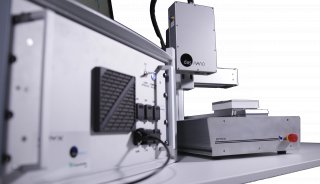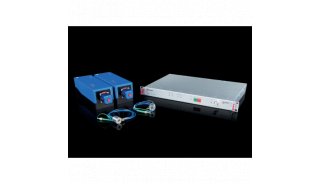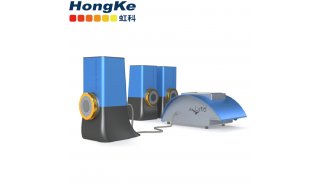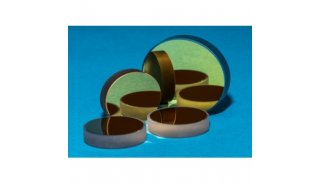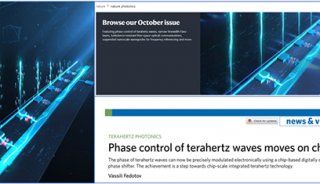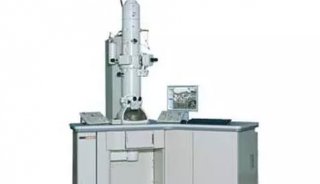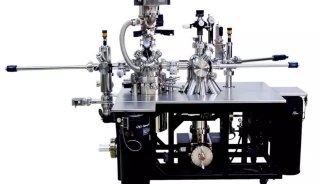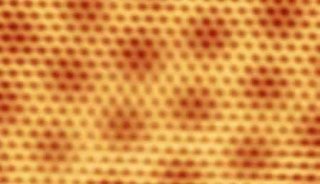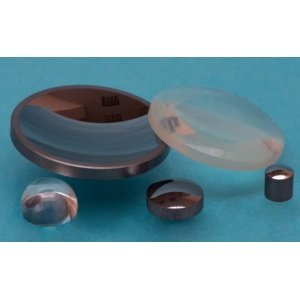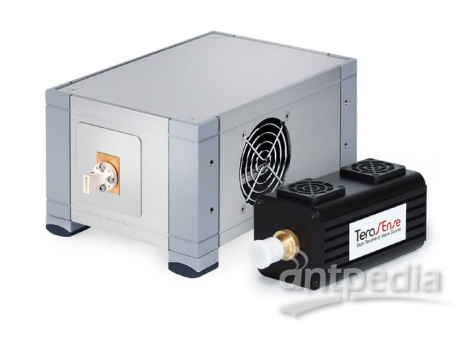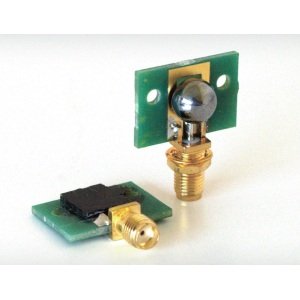石墨烯在太赫兹频段实现的无线片上网络(WiNoC)(三)
3.2. Molecular Absorption Attenuation (MAA)
As the electromagnetic wave at frequency
passes through a transmission medium of distance
, there exists a MAA caused by various molecules within the material substance. Let denote the MAA of the data transmission from to . Applying Beer-Lambert’s law to atmospheric measurements, can be determined bywhere is the transmittance of a medium and [m−1] is the medium absorption coefficient. Here, depends on the composition of the medium (i.e., particular mixture of molecules along the channel) as follows:where [m−1] denotes the individual absorption coefficient for the isotopologue of gas . (For simplicity in representation, the isotopologue of gas is hereafter denoted by.)
Applying radiative transfer theory [34],
is given by
where [atm] is the ambient pressure applied on the chip (the ambient pressure is defined as the pressure of the surrounding medium of the chip which could be varied depending on the application environment of the chip, such as computer chips, sensor chips that could be deployed indoors and/or outdoors, under the water and/or over the air), [K] is the system electronic noise temperature, atm is the reference pressure, K is the temperature at standard pressure, [mol/] is the molecular volumetric density (i.e., number of molecules per volume unit of ), and [/mol] is the absorption cross section of . Here, is obtained by the Ideal Gas Law aswhere m3atm/K/mol is the gas constant, mol−1 is the Avogadro constant, and [%] is the mixing ratio of.
In (10),
is given by
where [m2Hz/mol] is the line density for the absorption of (i.e., the absorption peak amplitude of ) and [Hz−1] is spectral line shape of determined bywhere [Hz] is the resonant frequency of , Js is the Planck constant, J/K is the Boltzmann constant, and [Hz−1] is the Van Vleck-Weisskopf asymmetric line shape of . In (13),where [Hz] is the resonant frequency of at reference pressure atm and [Hz] is the linear pressure shift of . Also, the Van Vleck-Weisskopf asymmetric line shape of in (13) can be given bywhere [Hz] is the Lorentz half width of . Here, is computed bywhere [Hz] is the broadening coefficient of air, [Hz] is the broadening coefficient of , K is the reference temperature, andis the temperature broadening coefficient.
3.2.1. Proposed Channel Model for GWiNoC
In summary, let
denote the total path loss for signal transmission from
to . From (7), (8), and (9), the total path loss of the proposed channel model iswhereRemark 2 (higher path loss due to MAA). In (10), it can be shown that
. From (8) and (17), we have and. This accordingly means a higher total path loss is caused by the MAA in the proposed channel model compared to that of the conventional channel model over the pure air with no MAA.
Remark 3 (environment-aware channel model). The proposed channel model depends on not only the distance between two cores
and
but also the absorption of gas molecules, the system electronic temperature, and the ambient pressure applied on the chip. In fact, from (10)–(16), the individual absorption coefficient of the isotopologue of gas (i.e., ) is shown to be dependent but not monotonically varied over . It can also be shown that the total path loss (i.e., ) in (17) monotonically decreases over the system temperature (i.e., ) but exponentially increases over the ambient pressure (i.e.,).
From Remarks 1, 2, and 3 in deriving the path loss, the communication environment is shown to have a considerable impact on the performance of the nanocommunications between GNAs within a GWiNoC at THz frequency band. This accordingly reflects the novelty of our proposed channel model which not only allows us to analyse the performance of the GWiNoC which will be shown in the following section, but also implies the design requirements of GWiNoC as well as its feasibility and applicability when employing the GNAs within a chip at THz band.
3.3. Link Budget Analysis
Taking into account all the antenna gains and losses caused by both DPL and MAA, the received power at core
, in dB, can be derived from (17) as
Notice that the power received atin (18) reflects on the received signal-to-noise ratio (SNR), which is an important measure for evaluating the effectiveness of a communication system as will be shown in the following section.
4. Channel Capacity of GWiNoC
In this section, the channel capacity of GWiNoC is derived for the proposed channel model. (Given the link budget analysis in Section 3.3, the bit error rate (BER) can be derived depending on modulation schemes. Although the BER analysis is worth a detailed evaluation, it is beyond the scope of this work in which we aim to evaluate the maximum achievable rate at which the data can be reliably transmitted over the wireless communication channel between two cores at THz band.) We have the following findings.
Theorem 4. The channel capacity, in bits/s, of a nanocommunication system between two THz GNAs within the chip package is given by
where is the number of subbands in the total channel bandwidth of [Hz], [Hz] is the width of each subband, [W] is the power allocated for the th subband, [Hz] is the centre frequency of the th subband, and is the individual absorption coefficient for the isotopologue th of gas th at frequency.
Proof. See Appendix A.
As expressed in Theorem 4, the channel capacity of the GWiNoC is a function of the power allocated at various subbands (i.e.,
). Therefore, it is crucial to solve the optimisation problem in (19) subject to the power constraint at (i.e.,). We have the following proposition.
Proposition 5. The channel capacity of the GWiNoC can be obtained as
where ,and can be found by water-filling method such thatProof. See Appendix B.
Considering the scenario of employing GNAs of a very small size compared to the distance between two on-chip cores, the channel capacity of the GWiNoC can be approximately computed as in the following corollary.
Corollary 6. When
, , , and , the channel capacity of the GWiNoC can be determined bywhereand is chosen such thatProof. As , , and , applying Maclaurin series [35, eq. (0.318.2)], it can be approximated thatFrom (21), after some mathematical manipulations, we haveSubstituting (27) into (20) with the assumption of, the corollary is proved.
Remark 7 (impact of molecules within the material substance of a chip). It can be noticed in Proposition 5 and Corollary 6 that the communications environment has a significant impact on the channel capacity of GWiNoC operating at THz band. In particular, besides the physical parameters of antennas, operating frequency, temperature, and ambient pressure, as shown in (23) and (24), the medium absorption coefficient (i.e.,
), which is dependent on the mixture of molecules and their composition inside a chip, also affects the performance of the nanocommunications between the GNAs.






